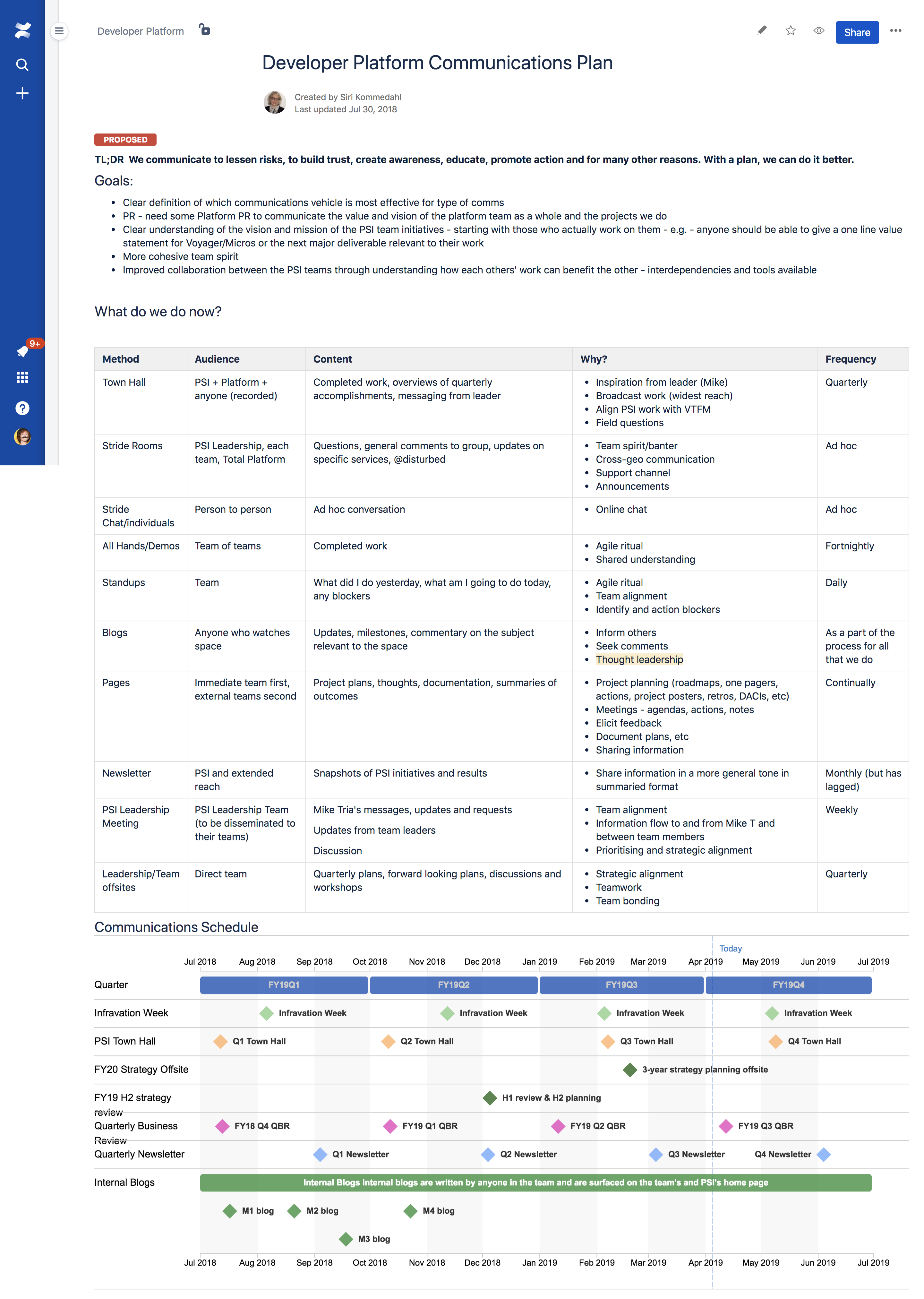Stakeholder communications plan
Spell out how you'll provide stakeholders with the right information at the right time, and via the right channels.
USE THIS PLAY TO...
Optimize how you share information with stakeholders
Build a comms plan for a specific project or just for your team's regular operations
If you're struggling with or on your Health Monitor, running this play might help.

People
2 - 6

Prep Time
30 min

Time
60 min

Difficulty
Easy
Running the play
As you work through your plan, don't forget that you and your teammates are stakeholders on the project, too!
Prep
Do your homework (30 min)
Create a table on a whiteboard or collaborative document. The column headers should be as follows, "Audience, Channels, Comms, Links/More Info." Label the rows, "Daily, Weekly, Fortnightly, Monthly, Quarterly, Yearly, Ad Hoc."
Ask everyone to come to the meeting with their own brainstormed list of your audiences (stakeholders), which might include: your executive sponsor, team members, leadership team, teams you're partnering with, adjacent or downstream teams, etc.
If available, the meeting facilitator should come to the meeting with a list of the team's existing communications with stakeholders, including why you're communicating it and the channel/s you typically use. This list will contain every-day things like updates on small decisions made via Slack channels as well as one-off communications like lunch & learn sessions or town hall presentations.
Step 1
Define the goal (10 min)
Create a statement, or group of statements, describing what you are aiming to achieve in preparing a stakeholder communication plan. Use {NOUN} + {VERB} format. Have one person scribe at the whiteboard while the whole group brainstorms. Your goal statements don't have to be perfect, so shoot for "80% there", and timebox the activity. You can always wordsmith it later if need be.
Example comms plan goals:
- Build trust with our stakeholders.
- Reduce risks stemming from duplicated effort and dependency bottlenecks.
- Educate downstream teams about what we're doing and how it may affect their work.
Step 2
Define who your stakeholders are (5 min)
Break out into groups of 2-4 and review the stakeholder brainstorms everyone prepared as pre-work. Agree as a small group on a the key stakeholders to be included in your communications plan. For each stakeholder, define the relationship to your project/team. Are they a decision maker? Sparring partner? Expert contributor? Remover of roadblocks?
Present back to the wider team and work to gain consensus on the stakeholders for whom you are building.
Step 3
Define your communication methods (15 min)
Now determine the most effective way to communicate with each stakeholder.
Think about what content you'll be sharing as well as the tool you'll use to share it. For example, with your direct team, you might choose to communicate through a chat room dedicated to sharing minor updates and asking for input from each other.
Step 4
Pull it all together to create your comms plan (20 min)
Use the table you created as pre-work to start building out a communications plan:
- Daily
- Weekly
- Fortnightly
- Monthly
- Quarterly
- Yearly
- Ad hoc
For each frequency, write down the audience you'll communicate with, the channels you'll use, what you'll communicate, and links to further details or artifacts.

For example...
Here's the stakeholder comms plan our developer relations team uses.
Step 5
Wrap it up (5 min)
Agree on an owner for the overall communications plan. You may even assign an owner to specific communications.

Pro Tip
Organizing team-wide communications like Town Halls can be a lot of work for someone to do every month. Consider rotating ownership to share the load and keep things fresh.
Nailed it?
Be sure to run a full Health Monitor session or checkpoint with your team to see if you're improving.
Want even more Playbook?
Drop your email below to be notified when we add new Health Monitors and plays.
Got feedback?
Drop a question or comment on the Atlassian Community site.
